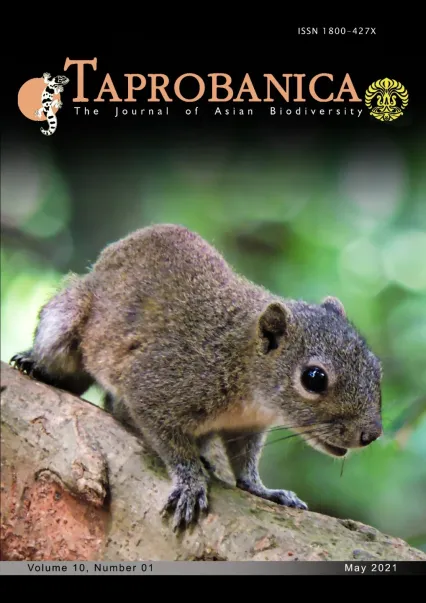

v10i1.250
Volume 10 | Number 1 | May 2021
Short Note
ISSN: 1800-427X (print)
eISSN: 1800-427X (online)
DOI:10.47605/tapro.v10i1.250
Submitted date: 21 November 2020
Accepted date: 5 March 2021
Published date: 27 May 2021
Pp. 61–63, pl. 12.
Biofluorescence in the Sri Lankan House Gecko (Hemidactylus parvimaculatus)
Robert W. Mendyk*
*E-mail: rmendyk@auduboninstitute.org
In just the last five years, biofluorescence has been recorded in a growing number of reptiles. In lizards, ultraviolet-induced visible fluorescence is known to occur in several genera of chameleons as well as the nocturnal gekkonids Pachydactylus rangei, Cyrtodactylus quadrivirgatus, C. baluensis and Chondrodactylus bibronii. Under ultraviolet (UV) light, these gekkonids display varying degrees of bone-based fluorescence of the anterior skull and various skeletal elements including the vertebral column, limb bones, pelvis, lower jaw and toe articulations.
Section Editor: Ruchira Somaweera
eISSN: 1800-427X (online)
DOI:10.47605/tapro.v10i1.250
Submitted date: 21 November 2020
Accepted date: 5 March 2021
Published date: 27 May 2021
Pp. 61–63, pl. 12.
Biofluorescence in the Sri Lankan House Gecko (Hemidactylus parvimaculatus)
Robert W. Mendyk*
*E-mail: rmendyk@auduboninstitute.org
In just the last five years, biofluorescence has been recorded in a growing number of reptiles. In lizards, ultraviolet-induced visible fluorescence is known to occur in several genera of chameleons as well as the nocturnal gekkonids Pachydactylus rangei, Cyrtodactylus quadrivirgatus, C. baluensis and Chondrodactylus bibronii. Under ultraviolet (UV) light, these gekkonids display varying degrees of bone-based fluorescence of the anterior skull and various skeletal elements including the vertebral column, limb bones, pelvis, lower jaw and toe articulations.
Section Editor: Ruchira Somaweera
- List of Articles & Contents





